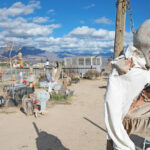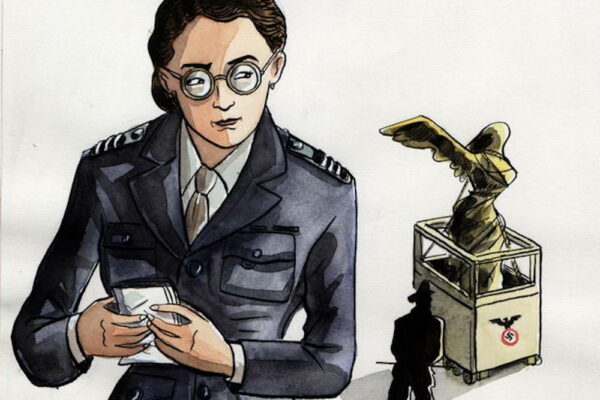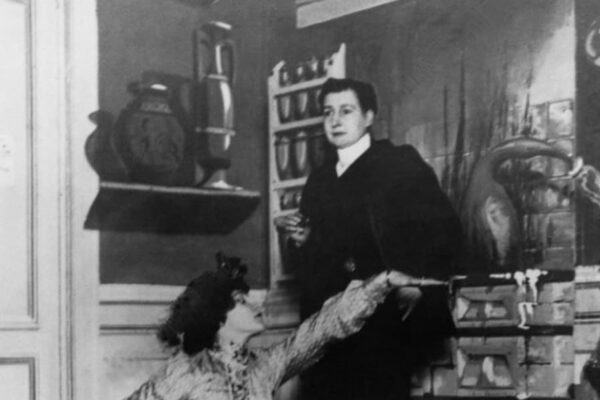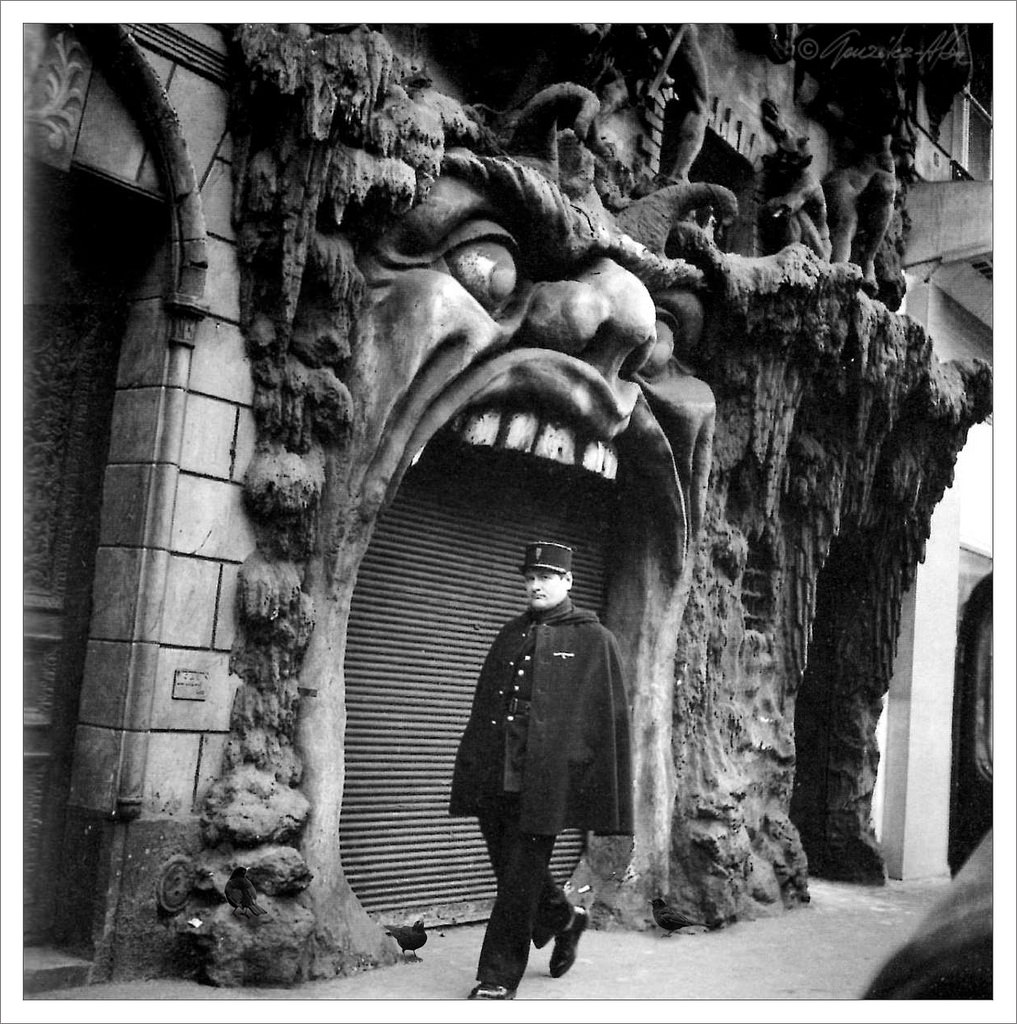
The decade is the 1890s, the height of La Belle Epoque in Paris; the ‘beautiful era’. But by night, the City of Light knew a much darker string of establishments to entertain its night owls. We’re outside the Cabaret du Néant, translation: the Cabaret of Nothingness, but originally known as the ‘Cabaret of Death‘ before authorities objected to the name. Just a stone’s throw from the Moulin Rouge in Montmartre, guests of the Cabaret du Néant converse over wooden coffins which conveniently doubled as tables, and drinks were served in imitation human skulls on coffins, which conveniently doubled as tables.
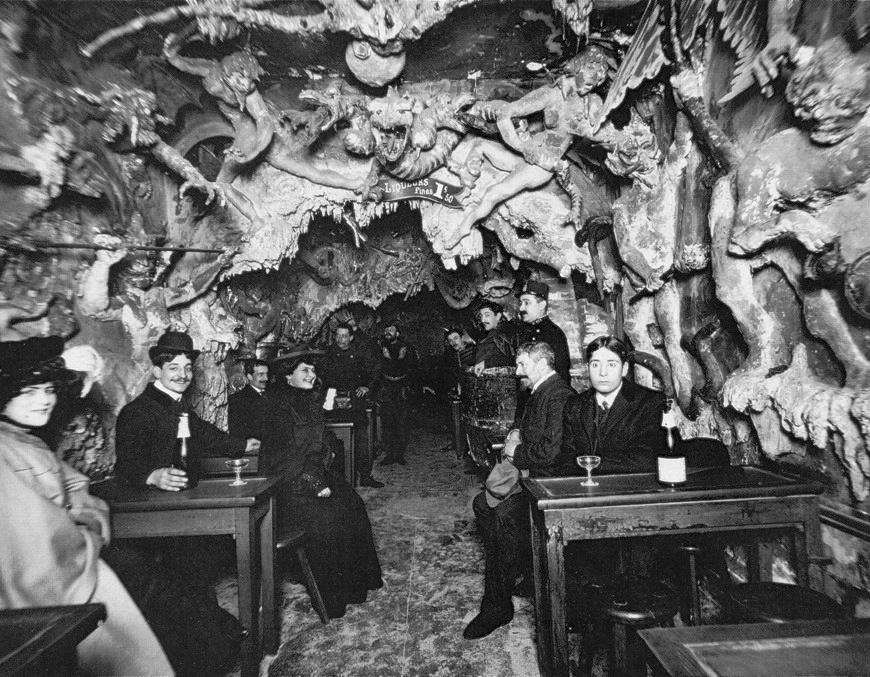
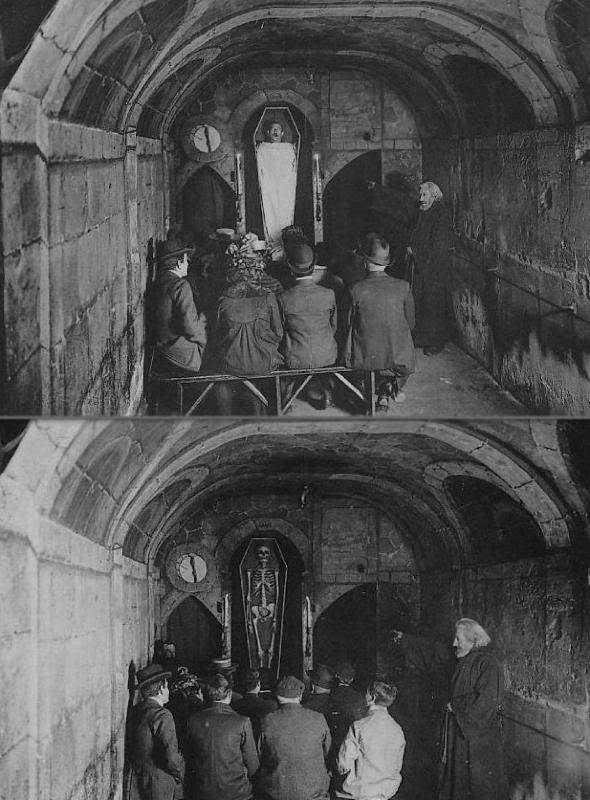
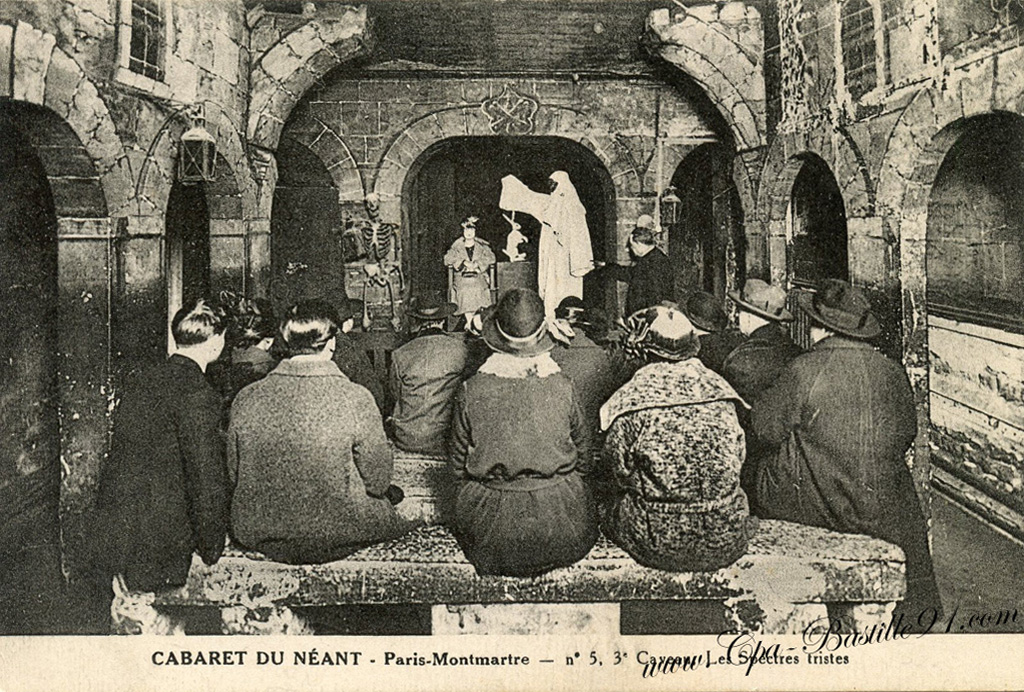
William Chambers Morrow and Édouard Cucuel, authors of the 1899 book Bohemian Paris of To-Day, described the scene as they toured the gothic watering hole.
Large, heavy, wooden coffins, resting on biers, were ranged about the room in an order suggesting the recent happening of a frightful catastrophe. The walls were decorated with skulls and bones, skeletons in grotesque attitudes, battle-pictures, and guillotines in action. Death, carnage, assassination were the dominant note, set in black hangings and illuminated with mottoes on death […] Bishop said that he would be pleased with a lowly bock. Mr. Thompkins chose cherries a l’eau-de-vie, and I, une menthe.
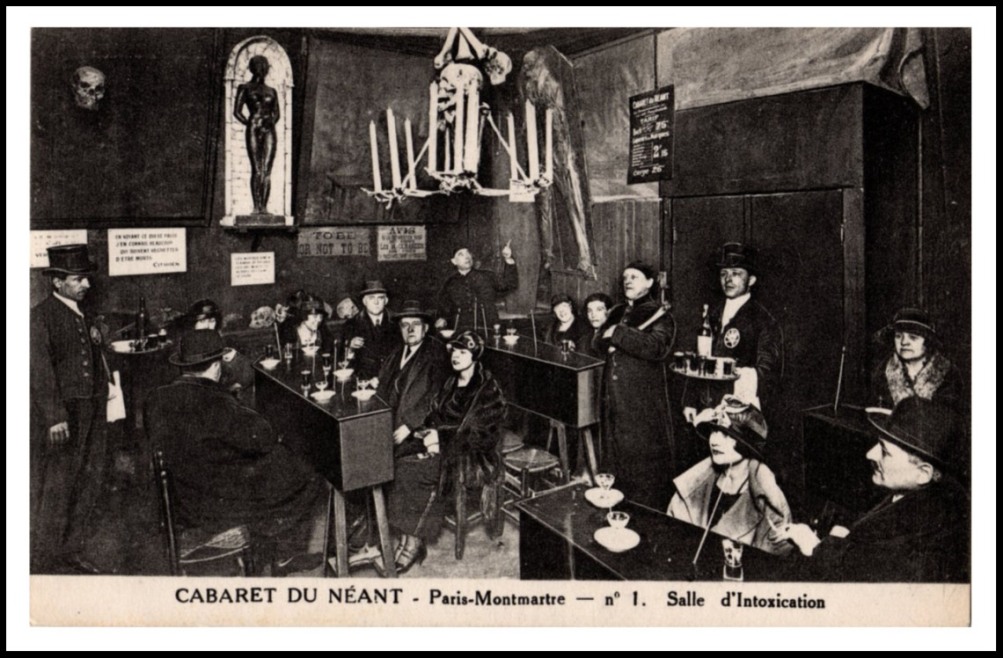
“One microbe of Asiatic cholera from the last corpse, one leg of a lively cancer, and one sample of our consumption germ!” moaned the creature toward a black hole at the farther end of the room. Some women among the visitors tittered, others shuddered, and Mr. Thompkins broke out in a cold sweat on his brow, while a curious accompaniment of anger shone in his eyes. Our sleepy pallbearer soon loomed through the darkness with our deadly microbes, and waked the echoes in the hollow casket upon which he set the glasses with a thump.
“Drink, Macchabees!” he wailed: “drink these noxious potions, which contain thvilest and deadliest poisons!”
Not satisfied with the Asian cholera infused cocktails, Morrow and Cucuel continued up the road and entered through the monstrous mouth of Cabaret de l’Enfer (inferno), where they drank around a caldron, male and female ‘devil musicians’ entertained them and ‘red imps’ served them drinks.
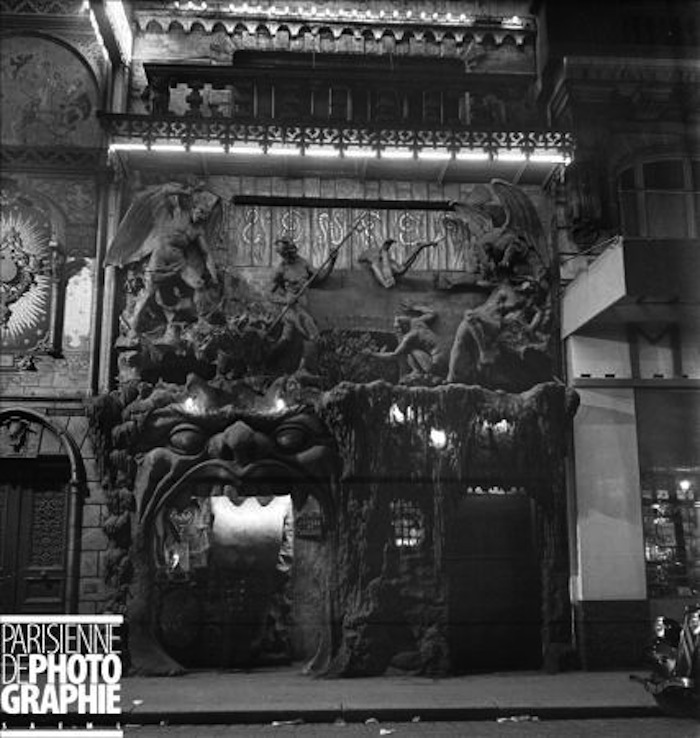
“Enter and be damned, the Evil One awaits you!” growled a chorus of rough voices as we hesitated before the scene confronting us. Near us was suspended a caldron over a fire, and hopping within it were half a dozen devil musicians, male and female, playing a selection from “Faust” on stringed instruments, while red imps stood by, prodding with red-hot irons those who lagged in their performance.
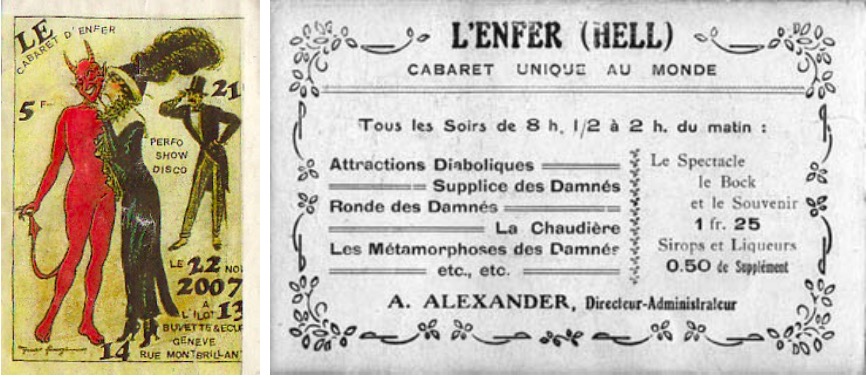
Crevices in the walls of this room ran with streams of molten gold and silver, and here and there were caverns lit up by smouldering fires from which thick smoke issued, and vapors emitting the odors of a volcano. Flames would suddenly burst from clefts in the rocks, and thunder rolled through the caverns. Red imps were everywhere, darting about noiselessly, some carrying beverages for the thirsty lost souls, others stirring the fires or turning somersaults. Everything was in a high state of motion.
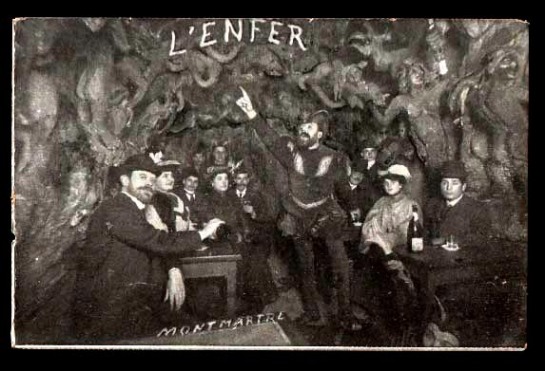
Both cabarets were a result of a rising trend in Paris at the time for themed establishments. The prison-themed Café du Bagne (Café of the Penitentiary) had opened a few years earlier in 1885 to huge success, with queues of Parisians waiting to get in every night. Bizarrely decorated like a prison eating hall, waiters were dressed as prison convicts dragging around fake balls and chains as they served patrons.
Over at 100 Boulevard de Clichy there was the Cabaret des Truands (Cabaret of Truants), whose exterior was crawling with giant spiders and interiors went for a medieval look. Even the staff dressed up like wenches and troubadours:
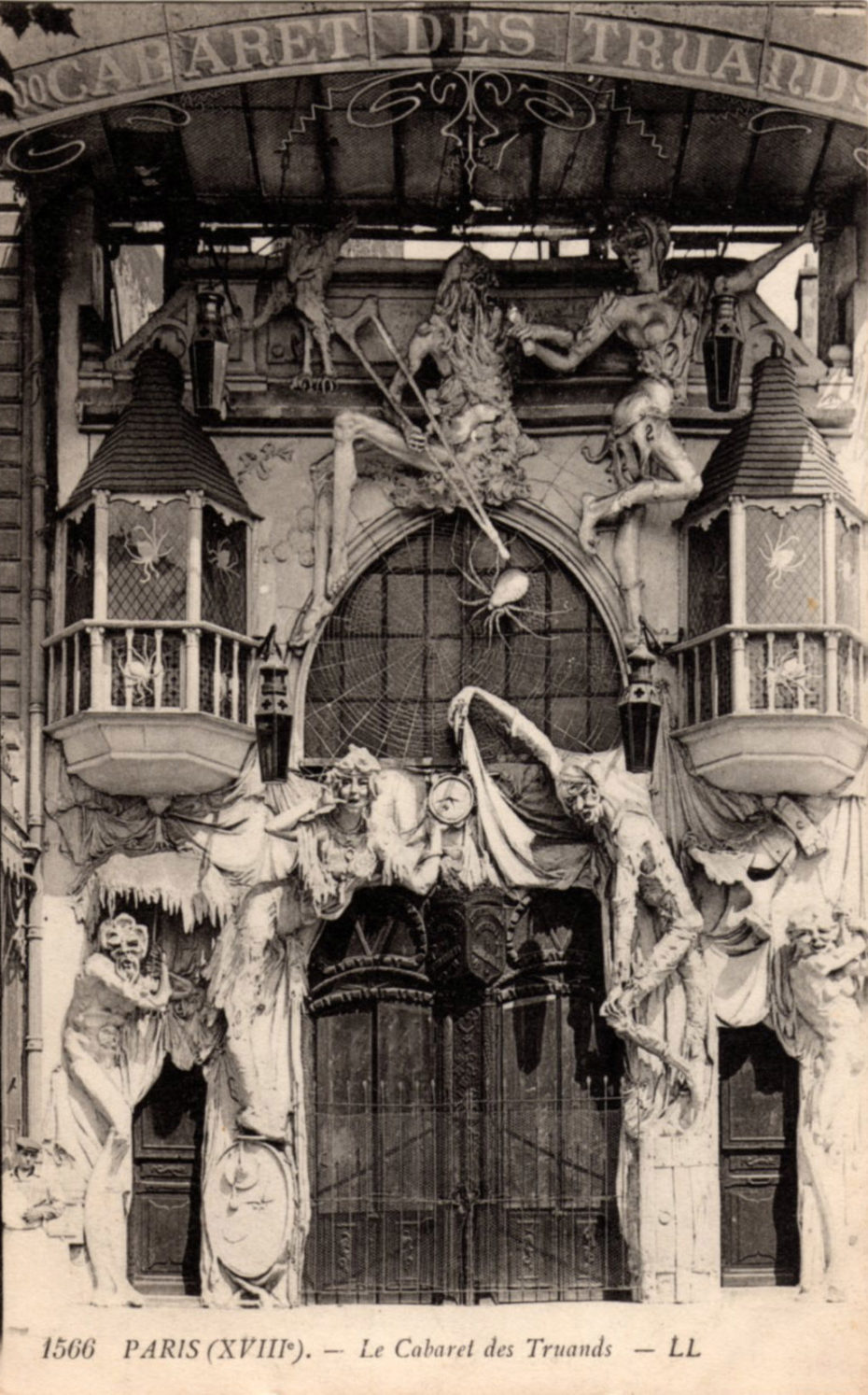
By the end of the 1890s, the original owners of the Montmartre cabarets began to leave the scene, artists stopped coming, bohemianism vanished and tourists became the new targets.
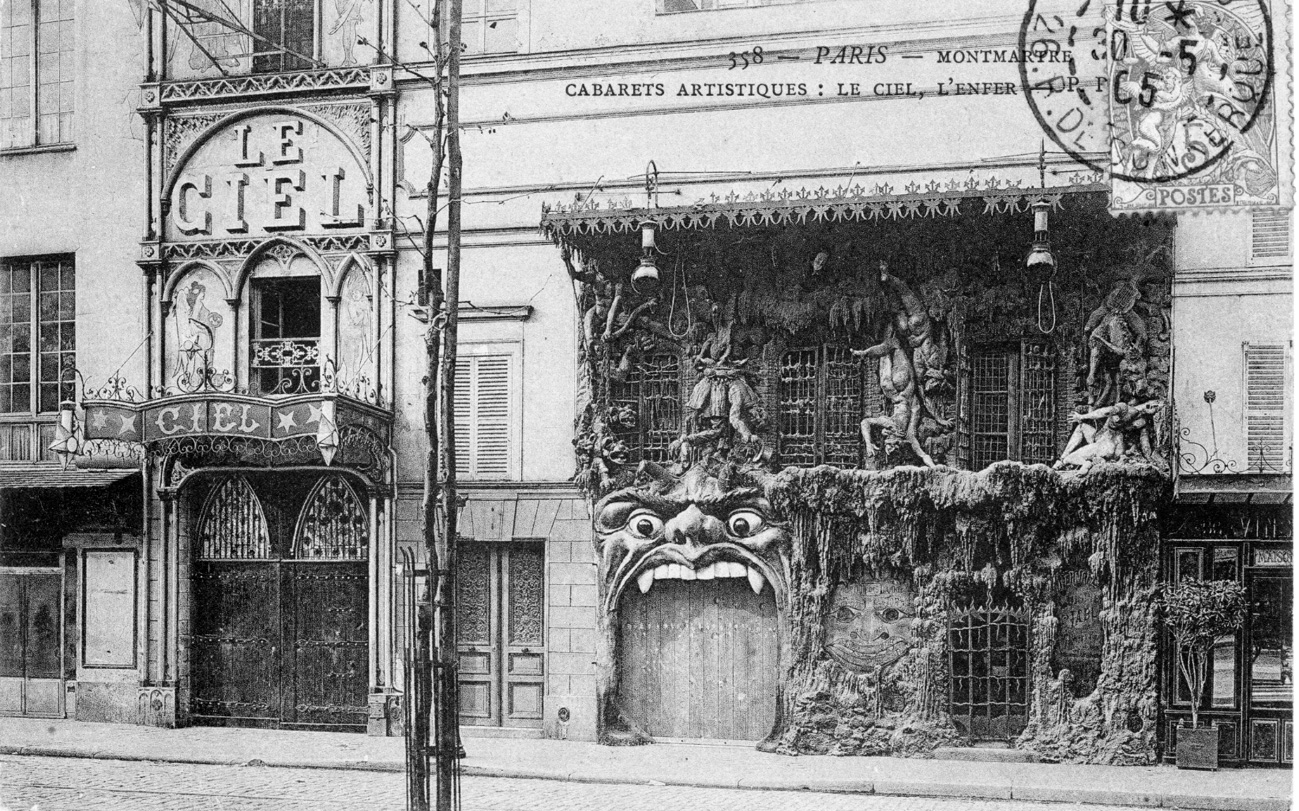
Many felt that the Café de l’Enfer (Café of Hell) had come to exemplify the purely commercial type of enterprise. While Cabaret du Néant closed during World War II (I expect Europeans had already seen enough of its own people come home in coffins), the less morbid but no less debaucherous Cabaret de l’Enfer remained open until 1952.


